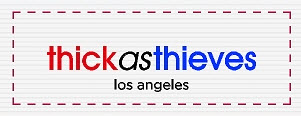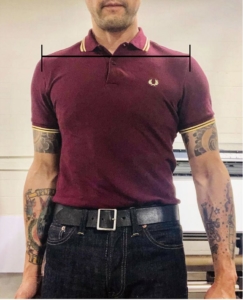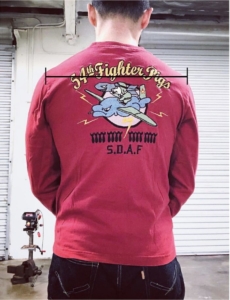Self-Measuring for Suits
Self Measuring can seem like a daunting task, full of possibility for mis-measuring, or not fully understanding how to measure for the most accurate measurement. And there is some truth to this, in that it’s possible to have 5 friends measure you, and you end up with 5 completely different sets of measurement. Hopefully this section will minimize error chances as much as possible, which will of course lead to a better fitting garment. The only tool you’ll need is a soft flexible measuring tape (not a tape measure), and perhaps a well fitting jacket if you want to measure for functional sleeves.
- When self measuring, try to get a few different sets done, maybe even on different days, or at least different time of day (late morning and mid afternoon for example). If the sets measure completely different, then you’ll know that something needs to be re-checked. If the circumferential measurements (which are most prone to varying measurements) are similar (ie: around chest, around torso, around waist etc) then you should be good to go. Lateral measurements (across shoulders) should never change due to those areas being mostly unaffected by physical differences within your body (ie: bloating, etc) over the course of a day
- For measuring around the chest and torso, it’s best to have someone assist. You can do it yourself, but be aware that looking downward at the measuring tape to read what it says, can cause mis-measurement. It’s best to stand straight and look straight ahead, hence it’s easier to do with someone assisting. If you do it yourself be aware of that, and try not to end up hunching over to read the tape. Just tilting your head down at the neck is good enough to read the measurement tape, but not affect your posture.
- The shoulders also benefit from help, although it is possible to self measure, in front of a mirror, and making sure the measure tape is taught, looking in the mirror to make sure your start and end points are accurate (see photo below). The back shoulder won’t be able to self measure, but if you can get an accurate front shoulder, adding 1″ to the front shoulder will usually result in an accurate back shoulder measurement. (ie: 17″ across the front will become 18″ across the back)
- Standing straight doesn’t mean over exaggerating your posture. It’s best to stand normal, but with good posture (not over exaggerated, and not hunched over)
Here are the measurements that will be required, in all cases of circumferential measurements, please measure with the tape nice and snug. Not too tight where it’s constricting, but not loose where there is gap at the tape.
- Around the neck base (at the base of neck where it connects to your shoulders. This is not the neck measurement, generally taken for a shirt, but slightly lower right at the base where it’s wider)
- Across the shoulders (front and back). This one is always tricky, knowing where to start/stop, and if you should go straight across or follow the curve of the shoulder. Please see the image below for visual assistance. This is where you will definitely need someone to assist.
- Around the chest, just under the armpits where the chest is at its fullest.
- Around torso, just above the navel about an inch.
- Around waistband where the trouser would sit, usually about 1.5″-2″ below navel.
- Around hips at the widest point where butt cheek crests out most.
- Around thigh at the widest point, just under the butt cheek.
- Around calf at the widest point
- Jacket sleeve (see below)
- Inseam (see below)
- Height
Jacket sleeve length is only required if you want functional button cuffs on the jacket sleeve. If not, the sleeve will be made to an average length for someone your height, and can be easily lengthened/shortened with your local tailor. Functional cuffs are not easily alterable if too long/short, so it’s recommended that if you are not 99% sure of the sleeve length, you get the non-functional cuffs for easy adjustment and once you’re sure of the length, we can do functional cuffs on a later suit. But if you want to try to measure the jacket sleeve, you will need a well fitting jacket on hand. The sleeve length is not the same as your shirt sleeve length, and while you can measure off the body, it’s VERY tricky and difficult and requires a lot of experience in doing this measure, to get a reasonably accurate measurement. If you have a well fitting jacket on hand, hang it so the jacket is draped naturally, and measure straight down from the top shoulder seam to the bottom jacket sleeve hem, straight down. If the jacket you are using is slightly too long/short in sleeve length, you can mentally adjust as needed if it’s only about 1/2″ too long/short. If you do happen to have the sleeve adjusted in length, make note of what was done (ie: shortened 1/2″ etc) so that next time if you plan to buy another suit we can make the adjustment to your pattern and can do functional cuffs as well.
Inseam is the length of the trouser leg, and this is a very subjective measurement where it can be said there is no such thing as a correct length. Some guys like a shorter pant leg length, some like it a bit longer where it breaks on top of the shoe. My recommendation is, if you have a really well fitting trouser, you can measure off that and get a very accurate length measurement. If you’re not sure, have someone assist with a measure tape and go from the inside of your leg at the bottom of your crotch, straight down to bottom of your ankle. Your jeans inseam is probably not the correct length, since jeans are typically worn longer than a trouser would be. We always advise that you have the inseam properly adjusted to your preference if you feel it’s too short/long. It’s the easiest/cheapest alteration to have done, and there’s no reason why this shouldn’t be exactly to your preferences. If you do happen to have it adjusted in length, make note of what was done (ie: shortened 3/4″ etc) so that next time if you plan to buy another suit we can make the adjustment to your pattern.


